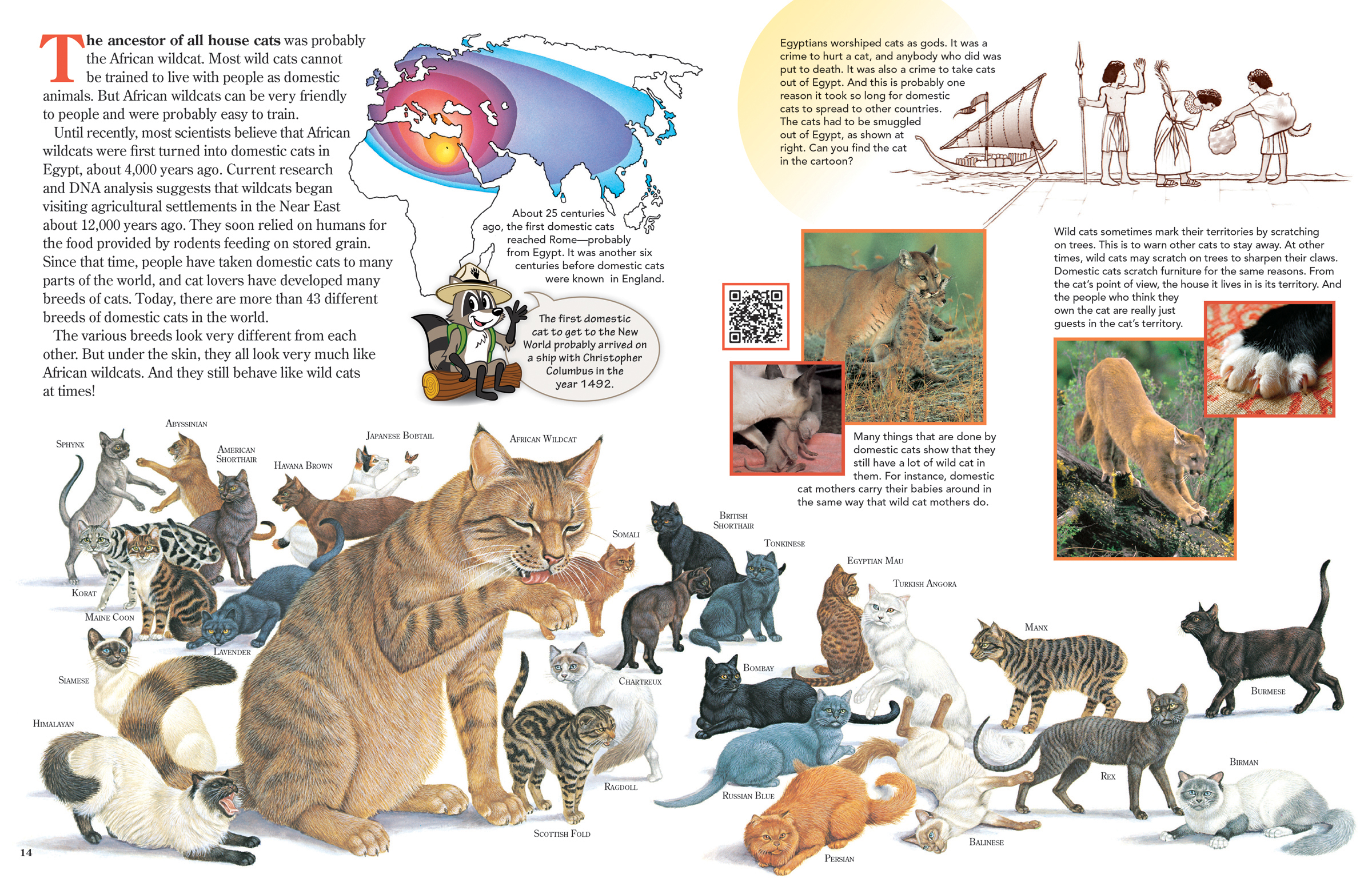
The Ancestor of All House Cats
ByThe ancestor of all house cats was probably the African wildcat. Most wild cats cannot be trained to live with people as domestic animals. But African wildcats can be very friendly to people and were probably easy to train.
Until recently, most scientists believe that African wildcats were first turned into domestic cats in Egypt, about 4,000 years ago. Current research and DNA analysis suggests that wildcats began visiting agricultural settlements in the Near East about 12,000 years ago. They soon relied on humans for the food provided by rodents feeding on stored grain. Since that time, people have taken domestic cats to many parts of the world, and cat lovers have developed many breeds of cats. Today, there are more than 43 different breeds of domestic cats in the world.

The various breeds look very different from each other. But under the skin, they all look very much like African wildcats. And they still behave like wild cats at times!
About 25 centuries ago, the first domestic cats reached Rome—probably from Egypt. It was another six centuries before domestic cats were known in England. The first domestic cat to get to the New World probably arrived on a ship with Christopher Columbus in the year 1492.
Egyptians worshiped cats as gods. It was a crime to hurt a cat, and anybody who did was put to death. It was also a crime to take cats out of Egypt. And this is probably one reason it took so long for domestic cats to spread to other countries. The cats had to be smuggled out of Egypt, as shown at right. Can you find the cat in the cartoon?
Wild cats sometimes mark their territories by scratching on trees. This is to warn other cats to stay away. At other times, wild cats may scratch on trees to sharpen their claws. Domestic cats scratch furniture for the same reasons. From the cat’s point of view, the house it lives in is its territory. And the people who think they own the cat are really just guests in the cat’s territory.
Many things that are done by domestic cats show that they still have a lot of wild cat in them. For instance, domestic cat mothers carry their babies around in the same way that wild cat mothers do.

